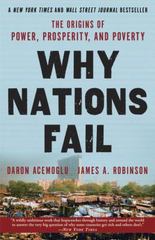Help with the following correctly
7. V. N. Murti and V. K. Sastri investigated the production character- istics of various Indian industries, including cotton and sugar. They specified Cobb-Douglas production functions for output (Q) as a double-log function of labor (L) and capital (K): InQ; = Bo + BilnL; + B2Ink; + 6; and obtained the following estimates (standard errors in parentheses): Industry Bo BI B2 R2 Cotton 0.97 0.92 0.12 .98 (0.03) (0.04) Sugar 2.70 0.59 0.33 .80 (0.14) (0.17) a. What are the elasticities of output with respect to labor and capital for each industry? b. What economic significance does the sum (B, + 32) have?Q1_Murti and Sastri (Econometrica, v.25/#2) investigated the production characteristics of various Indian industries, including cotton and sugar. They specified Cobb-Douglas production functions for output (Q) as a double-log function of labor (L), and capital (K): InQ;= 6+ 61InLi + 62Inki + &; and obtained the following estimates (standard errors in parentheses): Industry Bo BI B2 R2 Cotton 0.97 0.92 0.12 98 (0.03) (0.04) Sugar 2.70 0.59 0.33 80 (0.14) (0.17) a. What are the elasticities of output with respect to labor and capital for each industry? b. What economic significance does the sum ( B, + , ) have?2. You have obtained a sub-sample of 1744 individuals from the Current Population Survey (CPS) and are interested in the relationship between weekly earnings and age. The regression, using heteroskedasticity-robust standard errors, yielded the following result: [10] Eami = 239.16 + 5.20 x Age, R2 = 0.05, SER = 287.21., where Earn and Age are measured in dollars and years respectively. (a) Interpret the results. (b) Is the effect of age on earnings large? (c) Why should age matter in the determination of earnings? Do the results suggest that there is a guarantee for earnings to rise for everyone as they become older? Do you think that the relationship between age and earnings is linear?4. Real Curves' input choice CAPITAL (Number of machines per day) 10 Q-12 Q-8 NW C-$18 C-$27 1 2 3 4 5 6 7 9 10 LABOR (Number of workers per day) Real Curves is a sweatshop that manufactures dresses (output) for department stores. To make dresses, Real Curves needs sewing machines (capital) and workers to work the sewing machines (labor). Although the number of workers that Real Curves uses can be changed daily, the sewing machines are rented for one year. Once Real Curves rents a machine, it must pay rent for one full year. Only after the year is over can the number of machines be changed. In the graph above, the orange lines (marked C = $18 and C = $27) represent Real Curves' isocost curves for total costs of $18 and $27. The blue curve (marked Q = 8) and green curve (marked Q = 12) represent Real Curves' isoquants for 8 and 12 dresses, respectively. The red points (cross symbols) are placed at the tangent of the isocost and isoquant curves. Finally, the purple point (diamond symbol) is placed at the point (1, 6), where one worker per day (L = 1) and six sewing machines per day (K = 6) are used. a. Real Curves sells 12 dresses per day. The manager decides to rent six machines. Therefore, he must use Select... workers per day to produce exactly 12 dresses per day. b. Unexpectedly, the country where Real Curves produces its dresses hits hard economic times. As a result, consumers cut back on spending. Demand for Real Curves' dresses drops to eight dresses a day. But Real Curves has already rented six sewing machines for a year. In the Select... when the quantity of machines is fixed at six, Real Curves will choose to use |Select... worker(s) per day to produce eight dresses. In the Select... when the quantity of sewing machines is once again variable, Real Curves will choose to use Select... sewing machines and Select.. worker(s) per day to produce eight dresses. This means that Real Curves will spend Select... it did when the quantity of machines was fixed at six










